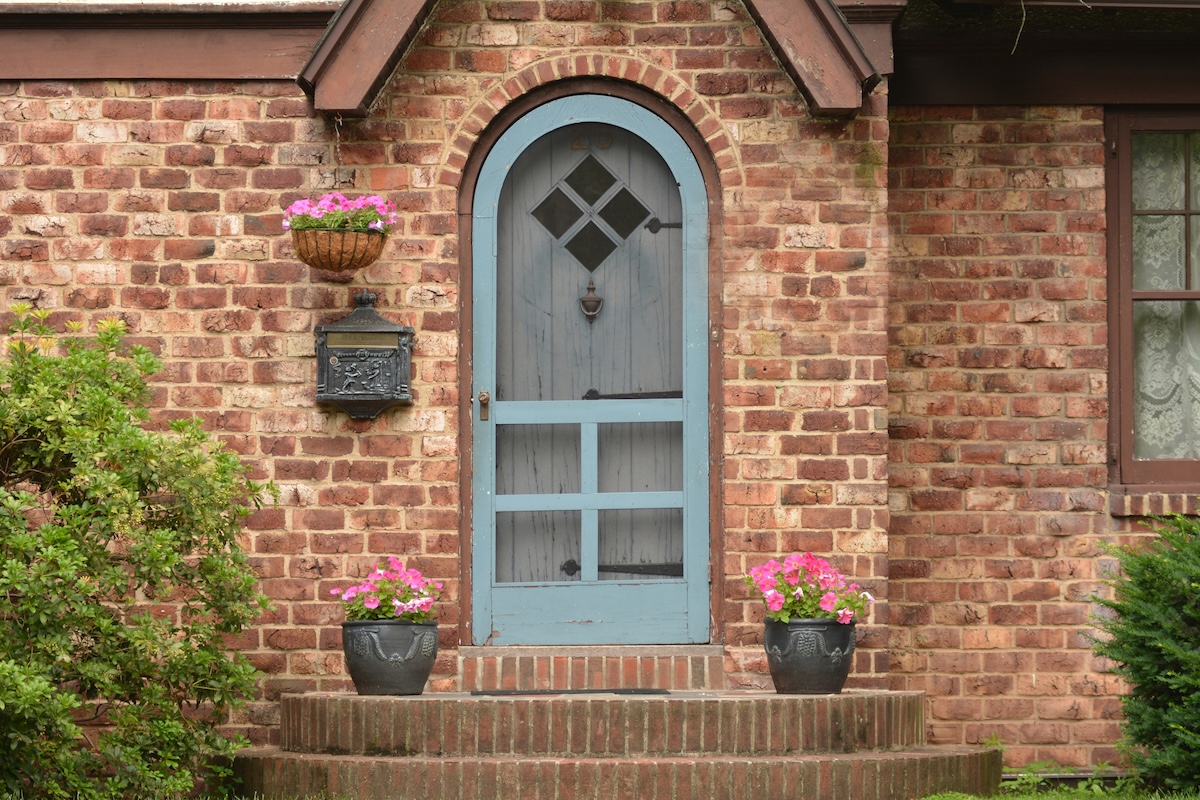


If you're a real estate investor looking to purchase, renovate, and resell properties for profit, fix-and-flip loans provide the fast, flexible financing you need to move quickly on deals and fund renovations.

If you're a real estate investor looking to purchase, renovate, and resell properties for profit, fix-and-flip loans provide the fast, flexible financing you need to move quickly on deals and fund renovations without tying up all your capital.
Real estate flipping can be incredibly profitable—if you have the right financing in place. The math is simple: buy an undervalued property, renovate it strategically, and sell it for more than your total costs. But executing that strategy requires capital, and traditional mortgages aren't designed for this type of investing.
Traditional lenders want you to live in the property. They want two years of tax returns. They take 30–60 days to close. And they certainly don't fund renovation costs.
For investors who need to move fast, fund renovations, and exit quickly, traditional financing is a non-starter. That's where fix-and-flip loans come in.
If you've been asking yourself, "How do successful investors finance flip projects?" this guide will walk you through everything you need to know about fix-and-flip loans and how they work.
A fix-and-flip loan (sometimes called a rehab loan or renovation loan) is a short-term financing solution designed specifically for real estate investors who purchase properties, renovate them, and resell them for profit.
Unlike traditional mortgages that assume you'll hold the property for years, fix-and-flip loans are structured around a simple premise: you'll buy the property, improve it, and sell it within 12–18 months.
Here's what makes these loans different from traditional financing:
The differences are fundamental:
Loan term: Traditional mortgages span 15–30 years, while fix-and-flip loans are short-term.
Purpose: Traditional mortgages are designed for long-term ownership. Fix-and-flip loans are specifically for short-term renovation and resale.
Qualification basis: Traditional mortgages focus on personal income and credit. Fix-and-flip loans evaluate the property's ARV (after-repair value) and deal fundamentals.
Renovation funding: Traditional mortgages don't include renovation costs. Fix-and-flip loans bundle renovation funding directly into the loan amount.
Closing speed: Traditional mortgages take 30–60 days to close. Fix-and-flip loans can close in as quickly as ten days.
Payment structure: Traditional mortgages require principal plus interest payments from day one. Fix-and-flip loans typically offer interest-only payments during the renovation period.
Income verification: Traditional mortgages require extensive income documentation. Fix-and-flip loans don't require income verification.
For investors focused on flipping properties, these differences make all the difference.
Fix-and-flip loans follow a specific structure designed around the renovation and resale timeline. Here's what you need to know:
1. Purchase funding
The loan provides capital to purchase the property. Most fix-and-flip lenders will fund 80–90% of the purchase price, requiring you to bring 10–20% down.
2. Renovation funding
In addition to the purchase price, the loan includes a renovation budget based on your scope of work. This is typically held in a reserve account and released in draws as work is completed.
3. Interest-only payments
During the renovation period, you make monthly interest-only payments. This keeps your carrying costs manageable while you're improving the property and not yet generating income from it.
4. Exit through sale
When you sell the property, the proceeds pay off the loan. Any profit above the loan amount, interest, and costs is yours to keep.
ARV is the cornerstone of fix-and-flip financing. It's the estimated value of the property after you complete all planned renovations.
How lenders use ARV:
Most fix-and-flip lenders will loan up to 70–80% of the ARV. This ratio protects the lender while giving you enough capital to execute the project.
Example:
Let's say you find a property with these numbers:
A lender offering 75% ARV would provide:
When you sell for $280,000, you'd repay the $210,000 loan plus interest, and keep the profit minus selling costs.
Most fix-and-flip lenders release renovation funds in stages, not all at once. Here's a typical draw schedule:
Initial draw (10–20%): Released at closing to get started
Progress draws: Released as work is completed and inspected:
Final draw: Released when work is fully complete and property is ready for sale
This structure protects both you and the lender, ensuring funds are used for actual renovations.
For the right investor working on the right project, fix-and-flip loans offer advantages that traditional financing simply can't match.
In real estate investing, opportunities don't wait. When you find an undervalued property with strong flip potential, you need to act fast—often competing with cash buyers or other investors.
Fix-and-flip loans close in 10–14 days, not 30–60. This speed allows you to:
Many investors struggle with the "how do I pay for renovations?" question. Personal savings? Credit cards? Home equity lines?
Fix-and-flip loans solve this by funding both the purchase and the renovation in a single loan. You're not piecing together multiple financing sources or depleting your cash reserves.
If you're self-employed or have income from multiple sources, traditional lenders want extensive income documentation. Fix-and-flip loans don't.
What matters is:
Your W-2s and tax returns? Not part of the equation.
By leveraging a fix-and-flip loan, you're not tying up all your capital in one project. This allows you to:
During renovation, when you're not generating income from the property, interest-only payments keep your monthly obligations manageable. This improves your cash flow and allows you to focus resources on completing the renovation.
While fix-and-flip loans are more flexible than traditional mortgages, lenders still have standards. Here's what Truehold Financial typically requires:
Credit score: Minimum 640+, though higher scores (680+) get better rates and terms
Investment experience: Some flip experience is preferred, though we work with newer investors who have strong projects and teams
Liquidity: Cash reserves to handle unexpected costs (typically 6–12 months of payments)
Team: For major renovations, a track record with contractors and project management
Property type: Single-family homes, condos, townhomes, small multifamily (2–4 units)
Property condition: Must be fixable within the loan term (12–18 months)
ARV support: Comparable sales must support your projected after-repair value
Clear title: Standard title insurance requirements
Marketability: Property must be in a market where you can realistically resell within the loan term
Detailed scope of work: Comprehensive renovation plan with line-item budget
Realistic timeline: Project must be completable in 6–12 months (leaving time to market and sell)
Budget: Renovation budget should align with ARV expectations and market norms
Permits: All necessary building permits for planned work
At Truehold Financial, we've designed our fix-and-flip program for serious investors who need financing that moves at the speed of opportunity.
1. Initial consultation
Tell us about your project:
2. Property and deal evaluation
We analyze the opportunity:
3. Loan approval and terms
Within days, you'll receive:
4. Closing
We close fast. Once approved, we work with you to coordinate closing on your timeline—often within 2 weeks.
5. Renovation draws
As you complete work, we inspect and release draws according to the schedule. Our team stays in communication throughout the project.
6. Exit and payoff
When you sell the property, the loan is paid off from sale proceeds. Any profit above the loan, interest, and costs is yours.
Fix-and-flip loans aren't the only option for renovation projects. Here's how they compare:
These terms are sometimes used interchangeably, but there are differences:
Hard money loans typically:
Fix-and-flip loans from established lenders typically:
Some investors use HELOCs to fund flips. This can work for small projects, but has limitations:
HELOC challenges:
Fix-and-flip loan advantages:
Some investors buy and renovate properties with cash. If you have significant capital, this works—but it's not always optimal:
Cash purchase challenges:
Fix-and-flip loan advantages:
Fix-and-flip loan rates typically range from 8–12%, depending on:
While higher than traditional mortgage rates, these rates reflect the short-term nature of the loan and the risk profile of renovation projects.
Most fix-and-flip lenders (including Truehold Financial) offer extension options if you need more time. Typically:
The key is communication. If you see delays coming, talk to your lender early.
This is a risk in any flip project, which is why conservative ARV estimates matter. However, if you find yourself in this situation, options may include:
A good lender will work with you to find solutions rather than forcing a fire sale.
Yes, though you may face:
Many lenders prefer to see at least one successful flip in your track record. If you're brand new, consider:
Most cosmetic and moderate renovations qualify:
Major structural work (foundation repairs, additions, etc.) may face additional scrutiny or require specialized construction loans.
This depends on the scope and your experience. For:
Even if you're capable, having professionals do permitted work protects you legally and helps ensure quality.
Fix-and-flip loans are powerful tools for the right investor in the right situation. Consider a fix-and-flip loan if:
Fix-and-flip loans probably aren't the right choice if:
If you're ready to explore fix-and-flip financing for your next project, here's how to get started:
House flipping is about finding opportunity, adding value, and profiting from your work. Your financing should support that goal—not slow you down or tie up all your capital.
Truehold Financial's fix-and-flip loan program is designed for investors who understand the business and need a lending partner who can keep up with the pace of real estate opportunities.
Connect with a Truehold Financial representative today to discuss your next flip project.
Sources:
1. ATTOM Data Solutions, "U.S. Home Flipping Report" (2024)
2. National Association of Realtors, "Investment Property Statistics" (2024)
3. CoreLogic, "U.S. Home Price Index" (2024)
Chat with a real person & get financing options within 48 hours.
Chat with a real person & get an offer for your home within 48 hours.
Call (314) 353-9757